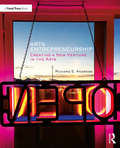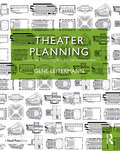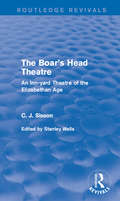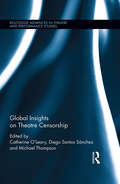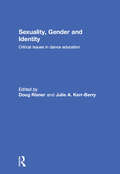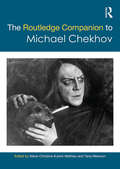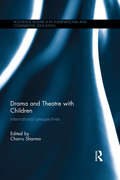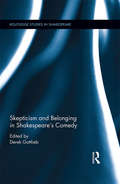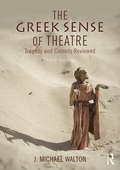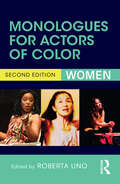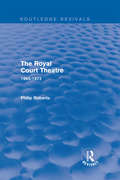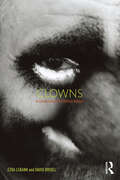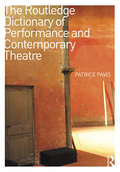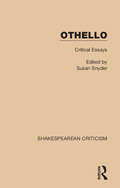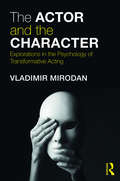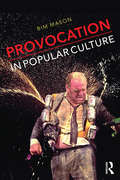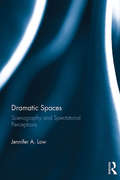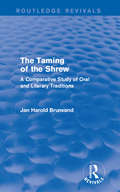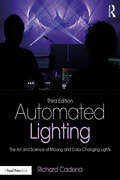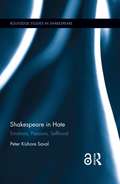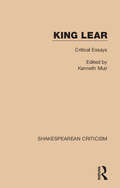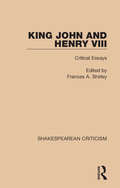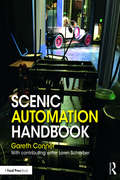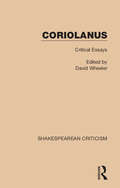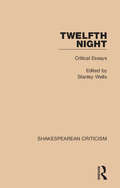- Table View
- List View
Arts Entrepreneurship: Creating a New Venture in the Arts
by Richard AndrewsArts Entrepreneurship: Creating a New Venture in the Arts provides the essential tools, techniques, and concepts needed to invent, launch, and sustain a business in the creative sector. Building on the reader’s artistic talents and interests, the book provides a practical, action-oriented introduction to the business of art, focusing on product design, organizational planning and assessment, customer identification and marketing, fundraising, legal issues, money management, cultural policy, and career development. It also offers examples, exercises, and references that guide entrepreneurs through the key stages of concept creation, business development, and growth. Special attention is paid to topics such as cultural ventures seeking social impact, the emergence of creative placemaking, the opportunities afforded by novel corporate forms, and the role of contemporary technologies in marketing, fundraising, and operations. A hands-on guide to entrepreneurial success, this book is a valuable resource for students of Arts Entrepreneurship programs, courses, and workshops, as well as for early-stage business founders in the creative sector looking for guidance on how to create and sustain their own successful venture.
Theater Planning: Facilities for Performing Arts and Live Entertainment
by Gene LeitermannThis book introduces the concepts of theater planning, and provides a detailed guide to the process and the technical requirements particular to theater buildings. Part I is a guide to the concepts and practices of architecture and construction, as applied to performing arts buildings. Part II is a guide to the design of performing arts buildings, with detailed descriptions of the unique requirements of these buildings. Each concept is illustrated with line drawings and examples from the author’s extensive professional practice. This book is written for students in Theatre Planning courses, along with working practitioners.
The Boar's Head Theatre: An Inn-yard Theatre of the Elizabethan Age (Routledge Revivals)
by C. J. SissonThe Boar’s Head Theatre, first published in 1972, provides an account of one of the Elizabethan inn-yard theatres. It is a reconstruction of considerable importance in our understanding of the performance conditions affecting Elizabethan drama, the mode of presentation and the nature of the audience. C. J. Sisson (1885-1966) was known especially for his research into Elizabethan court cases and the light they can throw on the literature and drama of the period. His discoveries included material on the Elizabethan inn-yard theatres which provides unquestionable evidence of great importance in relation to the evolution of the theatre in England. This book, which has been edited for publication by Stanley Wells, was to have been his major work on the subject. Historians of the theatre of this period will find this book indispensable, and those with a more general interest in the greatest age of English drama will be engrossed by the detailed and intimate glimpses of the theatre world which this story affords.
Global Insights on Theatre Censorship (Routledge Advances in Theatre & Performance Studies)
by Catherine O'Leary Diego Santos Sánchez Michael ThompsonTheatre has always been subject to a wide range of social, political, moral, and doctrinal controls, with authorities and social groups imposing constraints on scripts, venues, staging, acting, and reception. Focusing on a range of countries and political regimes, this book examines the many forms that theatre censorship has taken in the 20th century and continues to take in the 21st, arguing that it remains a live issue in the contemporary world. The book re-examines assumptions about prohibition and state control, and offers a more complex reading of theatre censorship as a continuum ranging from the unconscious self-censorship built into social structures and discursive practices, through bureaucratic regulation or unofficial influence, up to detention and physical violence. An international team of contributors offers an illuminating set of case studies informed by both new archival research and the first-hand experience of playwrights and directors, covering theatre censorship in areas such as Spain, Portugal, Brazil, Poland, East Germany, Nepal, Zimbabwe, the USA, Ireland, and Britain. Focusing on right-wing dictatorships, post-colonial regimes, communist systems and Western democracies, the essays analyze methods and discourses of censorship, identify the multiple agents involved, examine the responses of theatremakers, and show how each example reveals important features of its political and cultural contexts. Expanding understanding of the nature and effects of censorship, this volume affirms the power of theatre to challenge authorized discourses and makes a timely contribution to debates about freedom of expression through performance.
Sexuality, Gender and Identity: Critical Issues in Dance Education
by Doug Risner and Julie A. Kerr-BerrySexuality is a difficult topic for all educators. Dance teachers and educators are not immune to these educational challenges, especially given the large number of children, adolescents, and young adults who pursue dance study and performance. Most troubling is the lack of serious discourse in dance education and the development of educative strategies to promote healthy sexuality and empowered gender identities in proactive ways. This volume, focused on sexuality, gender, and identity in dance education, expands this developing area of study and investigates diverse perspectives from public schools, private sector dance studios and schools, as well as college and university dance programs. By openly bringing issues of sexuality and gender to the forefront of dance education and training, this book straightforwardly addresses critical challenges for engaged educators interested in age appropriate content, theme and costume; the hyper-sexualization of children and adolescents; sexual orientation and homophobia; the hidden curriculum of sexuality and gender; sexual identity; the impact of contemporary culture; and mass media, and sexual exploitation. The original research provides a frank discussion, highlighting practical applications and offering insights and recommendations for today’s educational environment in dance. This book was originally published as a special issue of the Journal of Dance Education.
The Routledge Companion to Michael Chekhov (Routledge Companions)
by Marie Christine Autant Mathieu Yana MeerzonThe Routledge Companion to Michael Chekhov brings together Chekhov specialists from around the world - theatre practitioners, theorists, historians and archivists – to provide an astonishingly comprehensive assessment of his life, work and legacy. This volume aims to connect East and West; theatre theory and practice. It reconsiders the history of Chekhov’s acting method, directing and pedagogy, using the archival documents found across the globe: in Russia, England, America, Germany, Lithuania and Switzerland. It presents Chekhov’s legacy and ideas in the framework of interdisciplinary theatre practices and theories, as well as at the crossroads of cultures, in the context of his forays into such areas as Western mime and Asian cosmology. This remarkable Companion, thoughtfully edited by two leading Chekhov scholars, will prove invaluable to students and scholars of theatre, theatre practitioners and theoreticians, and specialists in Slavic and transcultural studies. Marie-Christine Autant-Mathieu is Director of Research at the National Center For Scientific Research, and Assistant-Director of Sorbonne-CNRS Institute EUR’ORBEM. She is an historian of theatre and specialist in Russian and Soviet theatre.Yana Meerzon is Associate Professor in the Department of Theatre, University of Ottawa. Her book publications include Adapting Chekhov: The Text and Its Mutations, co-edited with Professor J. Douglas Clayton, University of Ottawa (Routlegde, 2012).
Drama and Theatre with Children: International perspectives (Routledge Research in International and Comparative Education)
by Charru SharmaDrama as a process-centred form is a popular and valued methodology used to develop thinking and learning in children, while theatre provides a greater focus on the element of performance. In recent years, offering drama and theatre as a shared experience is increasingly used to engage children and to facilitate learning in a drama classroom. Using drama and theatre as a central component with children, this book is an amalgamation of theory, research and practice from across the globe offering insights into differing educational contexts. Chapters provide an exploration of the methodologies and techniques used to improve drama in the curriculum, and highlight the beneficial impact drama has in a variety of classrooms, enriching learning and communication. Contributions from 17 authors, ranging from teachers in schools or universities, to researchers and drama practitioners, examine a variety of perspectives related to drama and children in an attempt to bridge gaps and move ahead collectively as educators, practitioners and researchers in drama and theatre. Divided into two parts, Part I reflects on the use of drama in its varied forms with children, while Part II focuses on projects and experiments with children using theatre in order to draw links between drama, theatre and pedagogy. Drama and Theatre with Children will be key reading for researchers, academics and postgraduate students in the fields of drama education, theatre education, curriculum studies and child development. The book will also be of interest to drama practitioners, school teachers and teacher training leaders.
Skepticism and Belonging in Shakespeare's Comedy (Routledge Studies in Shakespeare)
by Derek GottliebThis book recovers a sense of the high stakes of Shakespearean comedy, arguing that the comedies, no less than the tragedies, serve to dramatize responses to the condition of being human, responses that invite scholarly investigation and explanation. Taking its cue from Stanley Cavell’s influential readings of Othello and Lear, the book argues that exposure or vulnerability to others is the source of both human happiness and human misery; while the tragedies showcase attempts at the evasion of such vulnerability through the self-defeating pursuit of epistemological certainty, the comedies present the drama and the difficulty of turning away from an epistemological register in order to productively respond to the fact of our humanity. Where Shakespeare’s tragedies might be viewed in Cavellian terms as the drama of skepticism, Shakespeare’s comedies then exemplify the drama of acknowledgement. As a parallel and a preamble, Gottlieb suggests that the field of literary studies is itself a site of such revealing responses: where competing research methods strive to foreclose upon (or, alternatively, rejoice in) epistemological uncertainty, such commitments bespeak an urge to avoid or circumvent the human in the practice of scholarship. Reading Shakespeare’s comedies in tandem with a "defactoist" view of teaching and learning points in the direction of a new humanism, one that eschews both the relativism of old deconstruction and contemporary Presentism and the determinism of various kinds of structural accounts. This book offers something new in scholarly and popular understanding of Shakespeare’s work, doing so with both philosophical rigor and literary attention to the difficult work of reading.
The Greek Sense of Theatre: Tragedy and Comedy
by J Michael WaltonIn this updated and extended edition of The Greek Sense of Theatre, scholar and practitioner J.Michael Walton revises and expands his visual approach to the theatre of classical Athens. From the tragedies of Aeschylus, Sophocles and Euripides to the old and new comedies of Aristophanes and Menander, he argues that while Greek drama is seen now as a performance-based rather than a strictly literary medium, more attention should still be paid to the nature of stage image and masked acting as part of this conception.
Monologues for Actors of Color: Women
by Roberta UnoActors of colour need the best speeches to demonstrate their skills and hone their craft. Roberta Uno has carefully selected monologues that represent African-American, Native American, Latino, and Asian-American identities. Each monologue comes with an introduction and notes on the characters and stage directions to set the scene for the actor. This new edition now includes more of the most exciting and accomplished playwrights to have emerged over the 15 years since the Monologues for Actors of Color books were first published, from new, cutting edge talent to Pulitzer winners.
The Royal Court Theatre: 1965-1972 (Routledge Revivals)
by Philip RobertsThe English Stage Company at the Royal Court Theatre is the longest running specialist production organization in the history of British theatre. Philip Roberts’s account, which was first published in 1986, covers the period 1965-1972 in the Company’s life, beginning in 1965 with the appointment of William Gaskill as Artistic Director. It is not simply about the critical triumphs of these years of the Royal Court’s work, but also about the day-to-day workings of a busy and often turbulent organization. The result of the book is both scholarly and entertaining. This book will be of interest to students of the theatre and drama.
Clowns: In conversation with modern masters
by Ezra LeBank David BridelClowns: In Conversation with Modern Masters is a groundbreaking collection of conversations with 20 of the greatest clowns on earth. In discussion with clown aficionados Ezra LeBank and David Bridel, these legends of comedy reveal the origins, inspirations, techniques, and philosophies that underpin their remarkable odysseys. Featuring incomparable artists, including Slava Polunin, Bill Irwin, David Shiner, Oleg Popov, Dimitri, Nola Rae, and many more, Clowns is a unique and definitive study on the art of clowning. In Clowns, these 20 master artists speak candidly about their first encounters with clowning and circus, the crucial decisions that carved out the foundations of their style, and the role of teachers and mentors who shaped their development. Follow the twists and turns that changed the direction of their art and careers, explore the role of failure and originality in their lives and performances, and examine the development and evolution of the signature routines that became each clown’s trademark. The discussions culminate in meditations on the role of clowning in the modern world, as these great practitioners share their perspectives on the mysterious, elusive art of the clown.
The Routledge Dictionary of Performance and Contemporary Theatre
by Patrice PavisThe Routledge Dictionary of Contemporary Theatre and Performance provides the first authoritative alphabetical guide to the theatre and performance of the last 30 years. Conceived and written by one of the foremost scholars and critics of theatre in the world, it literally takes us from Activism to Zapping, analysing everything along the way from Body Art and the Flashmob to Multimedia and the Postdramatic. What we think of as 'performance' and 'drama' has undergone a transformation in recent decades. Similarly how these terms are defined, used and critiqued has also changed, thanks to interventions from a panoply of theorists from Derrida to Ranciere. Patrice Pavis's Dictionary provides an indispensible roadmap for this complex and fascinating terrain; a volume no theatre bookshelf can afford to be without.
Othello: Critical Essays (Shakespearean Criticism #5339)
by Susan SnyderOriginally published in 1988. Selections here are organised chronologically looking at both theatrical commentary and literary criticism. The organisation brings out the shifts in emphasis as each generation reinvents Shakespeare, and Othello, by the questions asked, those not asked, and the answers given. Chapters cover the theme of heroic action, Iago’s motivation, guilt and jealousy, and obsession. Some entries from the world of theatre delve into the portrayal of the Moor, Desdemona and Iago from the 1940s on. Authors include A. C. Bradley, William Hazlitt, Ellen Terry, Konstantin Stanislavsky, Helen Gardner and Edward A. Snow.
The Actor and the Character: Explorations in the Psychology of Transformative Acting
by Vladimir MirodanTransformative acting remains the aspiration of many an emerging actor, and constitutes the achievement of some of the most acclaimed performances of our age: Daniel Day-Lewis as Lincoln, Meryl Streep as Mrs Thatcher, Anthony Hopkins as Hannibal Lecter – the list is extensive, and we all have our favourites. But what are the physical and psychological processes which enable actors to create characters so different from themselves? To understand this unique phenomenon, Vladimir Mirodan provides both a historical overview of the evolution of notions of 'character' in Western theatre and a stunning contemporary analysis of the theoretical implications of transformative acting. The Actor and the Character: Surveys the main debates surrounding the concept of dramatic character and – contrary to recent trends – explains why transformative actors conceive their characters as ‘independent’ of their own personalities. Describes some important techniques used by actors to construct their characters by physical means: work on objects, neutral and character masks, Laban movement analysis, Viewpoints, etc. Examines the psychology behind transformative acting from the perspectives of both psychoanalysis and scientific psychology and, based on recent developments in psychology, asks whether transformation is not just acting folklore but may actually entail temporary changes to the brain structures of the actors. The Actor and the Character speaks not only to academics and students studying actor training and acting theory, but contributes to current lively academic debates around character. This is a compelling and original exploration of the limits of acting theory and practice, psychology, and creative work, in which Mirodan boldly re-examines some of the fundamental assumptions of actor training and some basic tenets of theatre practice to ask: What happens when one of us ‘becomes somebody else’?
Provocation in Popular Culture
by Bim MasonWhat role can provocation play in the process of renewal, both of individuals and of societies? Provocation in Popular Culture is an investigation into the practice of specific provocateurs and the wider nature of cultural provocation, examining, among others: Banksy Sacha Baron Cohen Leo Bassi Pussy Riot Philippe Petit Archaos. Drawing on Bim Mason’s own twenty-five year career as performer, teacher and creative director, this book explores the power negotiations involved in the relationship between provocateur and provoked, and the implications of maintaining a position on the ‘edge’. Using neuroscience as a bridge, it proposes a similarity between complexity theory and cultural theories of play and risk. Three inter-related analogies for the ‘edge’ on which these performers operate – the fulcrum, the blade and the border – reveal the shifts between structure and fluidity, and the ways in which these can combine in a single moment.
Dramatic Spaces: Scenography and Spectatorial Perceptions
by Jennifer LowFor literary scholars, plays are texts; for scenographers, plays are performances. Yet clearly a drama is both text and performance. Dramatic Spaces examines period-specific stage spaces in order to assess how design shaped the thematic and experiential dimensions of plays. This book highlights the stakes of the debate about spatiality and the role of the spectator in the auditorium – if audience members are co-creators of the drama, how do they contribute? The book investigates: Roman comedy and Shakespearean dramas in which the stage-space itself constituted the primary scenographic element and actors’ bodies shaped the playing space more than did sets or props the use of paid applauders in nineteenth-century Parisian theaters and how this practice reconfigured theatrical space transactions between stage designers and spectators, including work by László Moholy-Nagy, William Ritman, and Eiko Ishioka Dramatic Spaces aims to do for stage design what reader-response criticism has done for the literary text, with specific case studies on Coriolanus, The Comedy of Errors, Romeo and Juliet, Tales of Hoffman, M. Butterfly and Tiny Alice exploring the audience’s contribution to the construction of meaning.
The Taming of the Shrew: A Comparative Study of Oral and Literary Versions (Routledge Revivals)
by Jan Harold BrunvandWilliam Shakespeare’s The Taming of the Shrew has succeeded in surviving in contemporary culture, and has even managed to penetrate to the most modern media of mass communications. This book, first published in 1991, examines some of the different literary and oral versions of The Taming of the Shrew. This book is ideal for students of literature, drama, and theatre studies.
Automated Lighting: The Art and Science of Moving and Color-Changing Lights
by Richard CadenaAutomated Lighting: The Art and Science of Moving and Color-Changing Lights, Third Edition (formerly Automated Lighting: The Art and Science of Moving Light) continues to be the most trusted text for working and aspiring lighting professionals. Now in its third edition, it has been fully updated to reflect the vast changes in stage and studio luminairies—including LEDs, switch-mode power supplies, optics, networking, Ethernet-based protocols like Art-Net and sACN, wireless DMX, and much more. Its written in clear, easy-to-understand language and includes enough detailed information to benefit for the most experienced technicians, programmers, and designers. Additional content and resources are provided at the author's website www.automatedlighting.pro.
Shakespeare in Hate: Emotions, Passions, Selfhood (Routledge Studies in Shakespeare)
by Peter Kishore SavalHate, malice, rage, and enmity: what would Shakespeare’s plays be without these demonic, unruly passions? This book studies how the tirades and unrestrained villainy of Shakespeare’s art explode the decorum and safety of our sanitized lives and challenge the limits of our selfhood. Everyone knows Shakespeare to be the exemplary poet of love, but how many celebrate his clarifying expressions of hatred? How many of us do not at some time feel that we have come away from his plays transformed by hate and washed clean by savage indignation? Saval fills the great gap in the interpretation of Shakespeare’s unsocial feelings. The book asserts that emotions, as Aristotle claims in the Rhetoric, are connected to judgments. Under such a view, hatred and rage in Shakespeare cease to be a "blinding" of judgment or a loss of reason, but become claims upon the world that can be evaluated and interpreted. The literary criticism of anger and hate provides an alternative vision of the experience of Shakespeare’s theater as an intensification of human experience that takes us far beyond criticism’s traditional contexts of character, culture, and ethics. The volume, which is alive to the judgmental character of emotions, transforms the way we see the rancorous passions and the disorderly and disobedient demands of anger and hatred. Above all, it reminds us why Shakespeare is the exemplary creator of that rare yet pleasurable thing: a good hater.
King Lear: Critical Essays (Shakespearean Criticism #33)
by Kenneth MuirOriginally published in 1984. With selections organised chronologically, this collection presents the best writing on one of Shakespeare’s most studied plays. The structure displays the changing responses to the play and includes a wide range of criticism from the likes of Coleridge, Hazlitt, Moulton, Granville-Barker, Orwell, Levin, Stampfer, Gardner and Speaight interspersed with short entries from Keats, Raleigh, Freud and others. The final chapter by the editor elucidates his own thoughts on Lear, building on his commentary in the Introduction which puts the collection in context.
King John and Henry VIII: Critical Essays (Shakespearean Criticism)
by Frances A. ShirleyOriginally published in 1988. Arranged by play, the essays presented here focus first on production and then on a range of other issues such as characters, imagery, textual problems and themes. Both plays were more popular in earlier centuries and most later essayists focused on small issues rather than view the plays in wider perspective. More recent pieces included here seek organising principles for King John and look in more detail at Henry VIII. Beginning with the in-depth introduction by the editor, this collection shows the reception of the play by its Elizabethan audience compared to twentieth century audiences and looks at the history portrayed by Shakespeare. Some chapters review very varied stage productions while others are character analysis or individual focuses.
Scenic Automation Handbook
by Gareth ConnerScenic automation has earned a reputation of being complicated and cantankerous, a craft best left to the elite of our industry. Not sure of the difference between a VFD, PLC, or PID? If you have dreamed of choreographing scene changes with computerized machinery, but get lost in the technical jargon the Scenic Automation Handbook will guide you along the road to elegant automation. Adopting a pragmatic approach, this book breaks down any automation system into five points, known as the Pentagon of Power. Breaking down a dauntingly complex system into bite- size pieces makes it easy to understand how components function, connect, and communicate to form a complete system. Presenting the fundamental behaviors and functions of Machinery, Feedback Sensors, Amplifiers, Controls, and Operator Interfaces, the Scenic Automation Handbook demystifies automation, reinforcing each concept with practical examples that can be used for experimentation. Automation is accessible – come along and learn how!
Coriolanus: Critical Essays (Shakespearean Criticism)
by David WheelerOriginally published in 1995. Providing the most influential historical criticism, but also some contemporary pieces written for the volume, this collection includes the most essential study and reviews of this tragic play. The first part contains critical articles arranged chronologically while the second part presents reviews of stage performances from 1901 to 1988 from a variety of sources. Chapters chosen are representative of their given age and critical approach and therefore show the changing responses and the topics that interested critics in the play through the years. Coriolanus is an unsympathetic character and the play has been traditionally less popular than other tragedies - a comprehensive introduction by the editor discusses these attitudes to the play and the reasons behind them.
Twelfth Night: Critical Essays (Shakespearean Criticism)
by Stanley WellsOriginally published in 1986. Among the most frequently performed and high admired of Shakespeare’s plays, Twelfth Night is examined here in this collection of writings from well-known essayists and scholars. The chapters present to the modern reader discussions of the play to enhance understanding and study of both the text and performances. Opening essays address individual characters; then some accounts of its potential and theatrical reviews are included; finally followed by critical studies looking at various parts and themes. The editor’s introduction explains the usefulness of each chapter and gives an overview of the selection.
